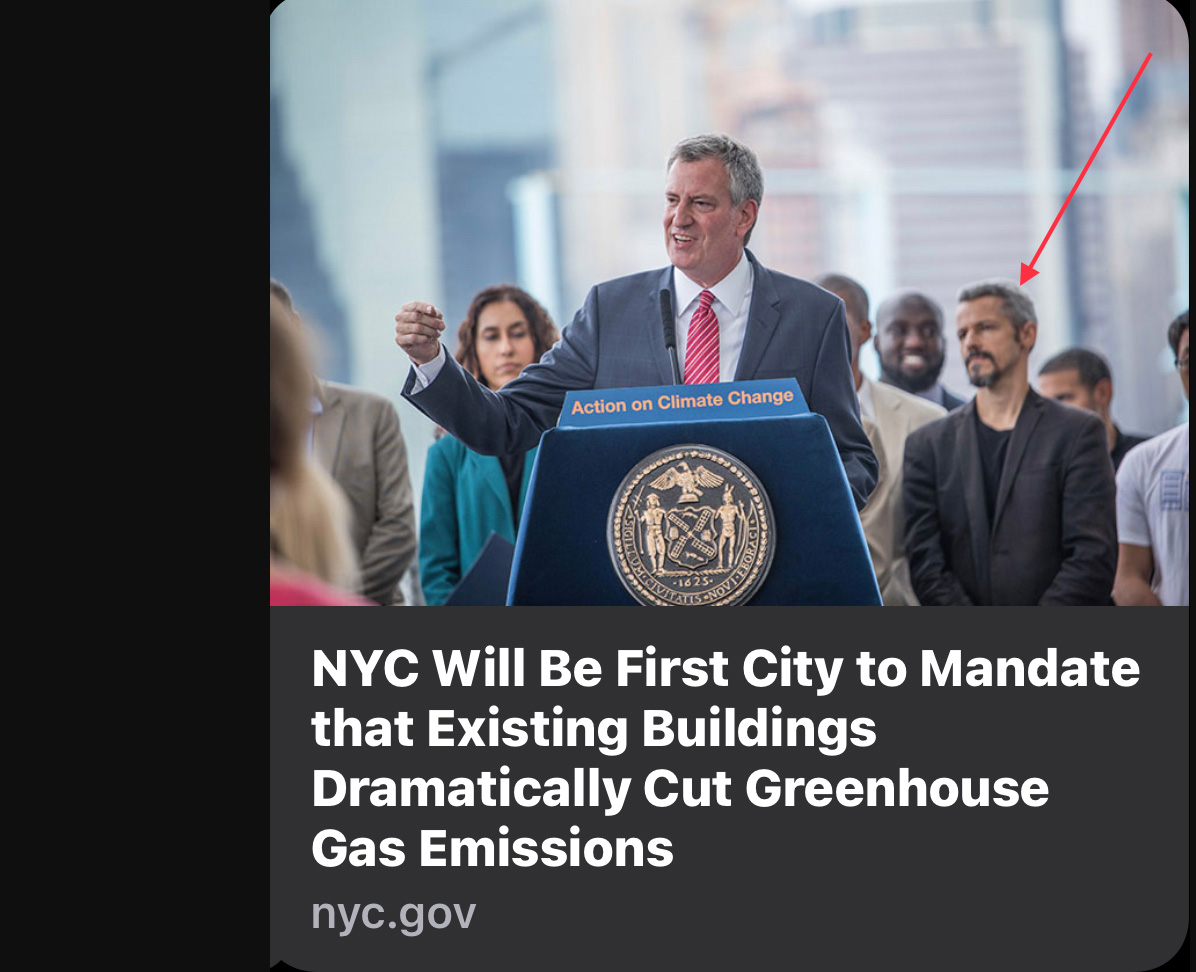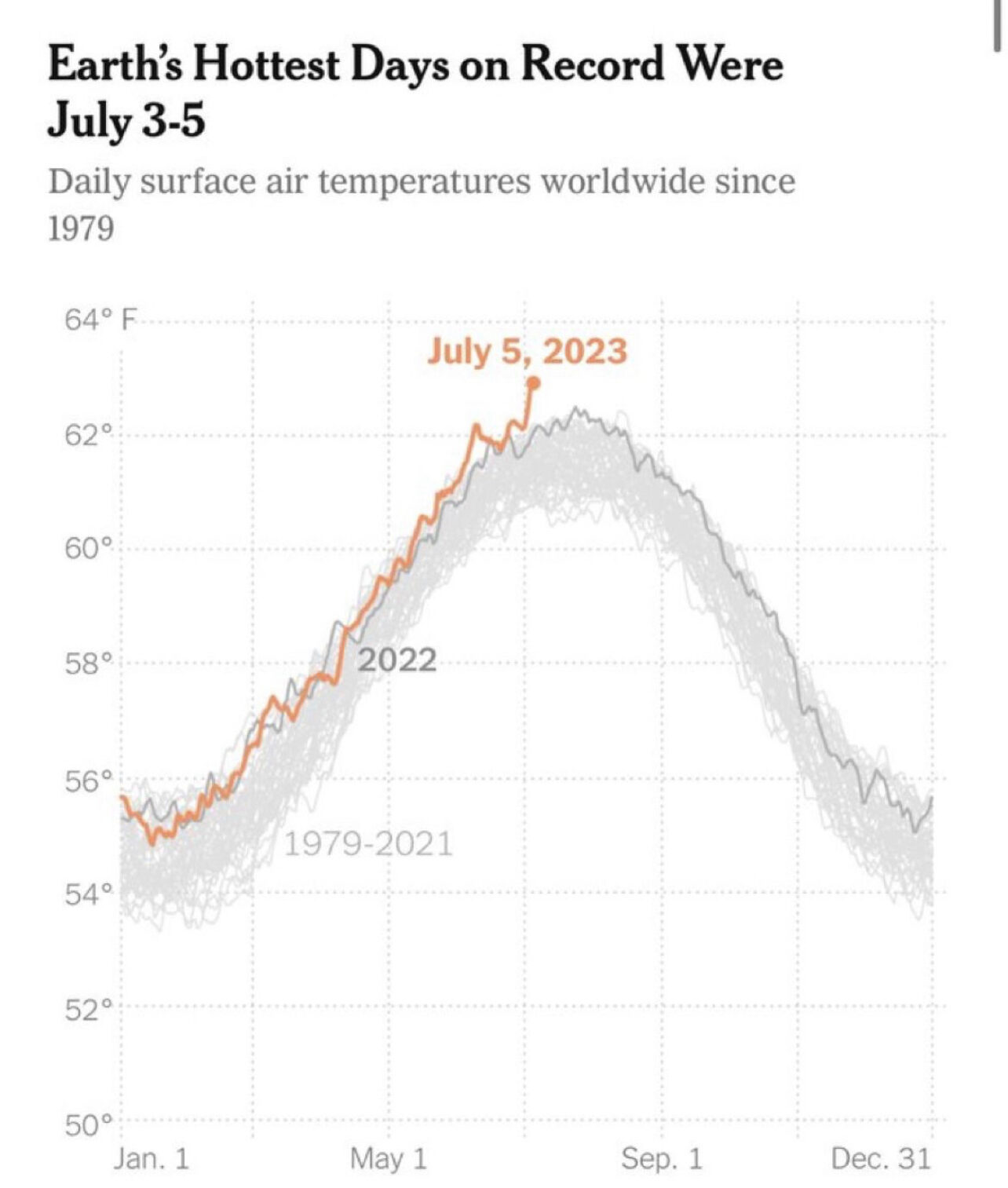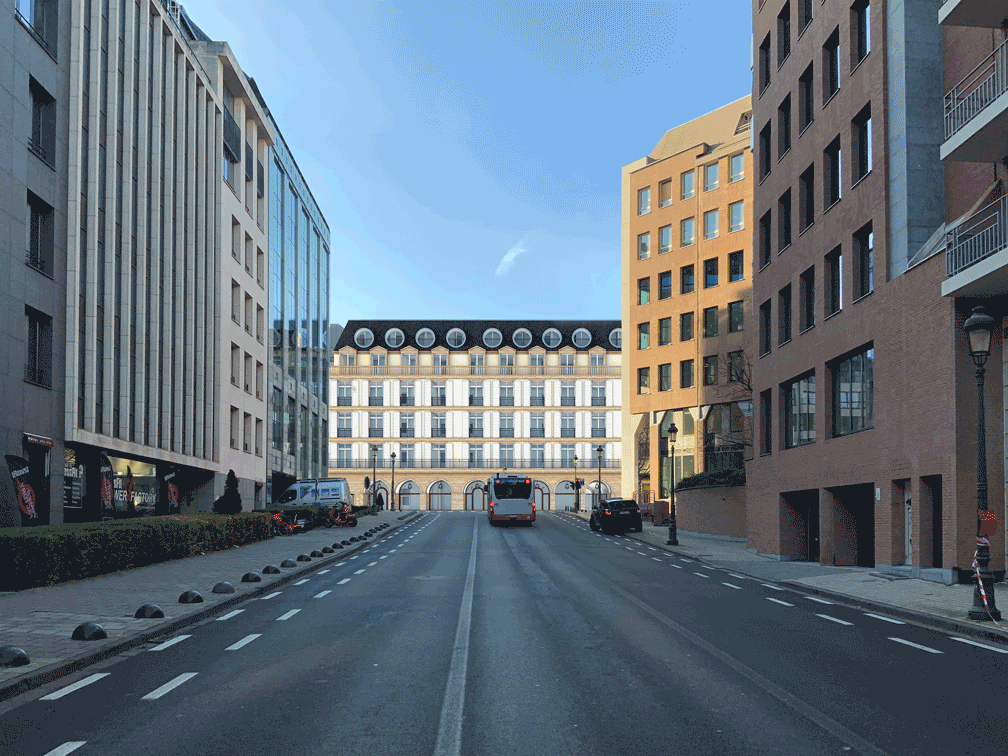A financially sustainable mission where alternative supplemental funding is key and job 1. There is a perfect storm brewing – one where public funding, accelerated by the nearly $2 trillion IRA bill, set to peak in 2024, is colliding with rising public furor due to extreme climate events.
Municipal, State, Federal, and Utility Co incentives & grants will be actively cultivated and matched to the potential target pool.
High level principal actors from all relevant orgs will be engaged for collaboration, support and insight.
Potential for custom deals or future alterations to existing program parameters will also be explored and proactively encouraged.
Our existing network will be brought to bear as we make an intensive push to expand: EE Retrofit is a strong and rapidly expanding category for many public funding avenues.
NYC announces LL97 as Andreas backs up Mayor

Proactively building this knowledge and network pool immediately during Stage 1 will pay dividends in Stages 3A & B when grants, subsidies, and incentives will be activated.
| Fund or Program | Fund Size | Source / Administrator | Disbursement Method | Special Details | ||
| Climate Friendly Home Fund (CFHF) | 250M | NY State / Community Preservation Corp | Various | 25k per unit - MEP / Electrification / 5-50 units | ||
| Green and Resilient Retrofit Program | $80M in grants or loans | Department of Housing and Urban Development | sustainability and resiliency features can apply for a maximum sum of $750K, or $40K per unit, $10M, or $60K per unit green certifications such as LEED or Passive House | Comprehensive funding of up to 80k per unit or 20M per property |
||
| Clean Communities Investmnt Accelerator (CCIA) | 6 Billion | EPA / TBD (CPC) | 100% Disadvantaged communities | |||
| National Clean Investment Fund (NCIF) | 14 Billion | EPA / TBD | NCIF will provide grants to 2–3 national nonprofit to provide accessible, affordable financing for tens of thousands of clean technology projects across the country. | EPA anticipates that programs funded under this opportunity will start by July 2024. | ||
| Commercial Property Assesed Clean Energy (C-PACE) | project based | Nu-Veen Green Capital | 0% down payment and covers all hard and soft costs (no out of pocket) | repayment as a benefit assesment (20-30 years) can be combined with other grants /etc. - available in multiple States | ||
| IRA General (tax credits & rebates | 370 Billion | DOE / NYSERDA | Various programs - can be optimized by project scope | |||
Adjustments & Pricing Power
Once goals are clear and a GSHR level Yeti retrofit is the ultimate aim, the additional costs can be partially or even fully offset by various conceptual tools as they emerge.
This can be a simple pricing offset based on LL11 façade damage, or similar discounts enabled by near worthless heating systems.
An even more powerful tool, soon to be activated once the “City of Yes” carbon neutrality amendment is passed.
This initiative will “reward” a 5% FAR exemption to future buildings that fall under Local 157 mandates if those future buildings also meet ultra-low-energy standards, like Passive House standards.
A 5% FAR can be used, for example, to add an ultra valuable “penthouse” floor to a high performance building - essentially financing the retrofit plus construction with the increased NOI.

These are just a few examples of how the predetermined goal of a PH level hyper-efficient retrofit can “pay for itself” before the energy cost savings and asset appreciation are factored in. Property tax incentives and numerous other grants and subsidies are also potentially applicable, and more are on the way.
Retrofit Item
All-electric Conversion
Reduced Install Cost (CapEx)
Cost Recovery Operation (OpEx)
Item Life Expectancy
Full Passive House structure upgrade
Yes
Overall cost neutral as a complete system
50-80% in heating and cooling load / costs
Up to 25 years
Heat Pump System (air source)
Yes
Reduced install costs compared with fossil fuel systems
Reduced utility costs, reduced maintenance costs
Up to 15 years
Battery Back-up System
Yes
Energy income or utility costs reduction in conjunction with solar
10 to 20 years
PV Solar Production System
Yes
Energy income or utility costs reduction
Up to 25 years
Cozy heating system upgrade
No
low install costs
15-30% reduced operational costs
20 years
Domestic Hot Water (DHW) Retrofit
Yes
Reduced install costs when part of boiler upgrade
30-60% reduced operational costs
20 years
Accelerated Change
Valuation & Appreciation
Another potentially important factor is the shifting value of residential real estate based on qualities not traditionally measured or understood. The world is at the early stages of a transition from “100 year extreme weather events” to permanent heating and outlier extremes.
NYC Smoke Alarm Ignites A Paradigm Shift In Housing
read more
Fortunately, one of the most powerful solutions for reducing GHG emissions in the built-world, EE retrofit, has even more powerful adjacent benefits: low or no cost temperature and indoor climate control, clean, healthy filtered air and ventilation, plus possible on-site power production and storage.
These features, in the very near future, will not be considered luxury add-ons but be understood on a visceral level as necessary for increased resilience, adaptation and even survival.
To appreciate the significance of this, simply imagine a block of multi-family buildings, then compare the negative repercussions in any building that is inefficient, costly to heat or cool, and unhealthy to live and breathe in during impure air events.
Try to compare the costs once utility prices skyrocket (as they already have in Germany) or when the grid becomes unreliable (like we’ve seen during heat waves in Texas and elsewhere). Insurance rates? LL 97 penalties? Casualties due to wildfire smoke inhalation? None of this bodes well for the valuations of the buildings that did not receive a Yeti level retrofit.
Above: High temperatures and smoke, June 29, 2023
On the flip side - the deeper and more comprehensive an upgrade the building has received, plus the more extensive the special added technology like solar PV production, battery storage, and other technology like VPP systems, grid interactive and grid optional operation modes, and more, the higher the value of those buildings will climb, when measured against a typical neighbor.
Value re-calculation examples
Permanent wildfire smoke: Building with vs. without filtration and healthy air
Extreme heat and cold: Buildings that are inexpensive to heat and cool vs. buildings that either can’t be kept at a constant temperature, or are too expensive to heat and cool
Frequent and extended power outages: “Grid optional” hyper efficient buildings will be highly valued in an environment where grid failures and power outages are increasingly more frequent.EE Retrofits can do more: Elevate a City and create a future landmark
By using a retrofit to do more than technical and mechanical work, the building and its facade can elevate the street, neighborhood and even the city to instant landmark status. A large investment with much larger returns.
 After
After
 Before
Before
Image @ 2023 Kollhoff, Benzing & Pols
Hamburg Radical Upgrade
Another example of before and after, this time the before condition which is nearly uninhabitable, brought down the value of the neighboring buildings. The value of both the renovated building, and the neighboring ones, were subsequently raised, substantially, by the extensive make-over.
Looking closely, an added top floor (penthouse level) can be seen in the "after" photo, something that the pending 5% FAR PH amendment could make a common option in NYC.


